With the rise of artificial intelligence in content creation, distinguishing between human-written and AI-generated text has become a growing challenge. This is where an AI detection tool comes into play. Whether you’re a teacher checking essays, a publisher verifying originality, or a business ensuring authenticity, AI detection tools are becoming indispensable in the digital age.
In this guide, we’ll explore what an AI detection tool is, how it functions, why it’s important, and how to choose the right one for your needs.
What is an AI Detection Tool?
An AI detection tool is a software or web-based application designed to identify whether a piece of text was generated by artificial intelligence or written by a human. These tools analyze the structure, syntax, coherence, and linguistic patterns of a document to determine its origin.
AI-generated content often has a unique statistical fingerprint. Detection tools leverage machine learning and natural language processing (NLP) to flag these patterns, helping users verify authenticity.

Why Do We Need AI Detection Tools?
AI writing tools like ChatGPT, Jasper, and others are increasingly being used to create articles, blogs, academic papers, and even code. While this automation can be useful, it also opens the door to ethical concerns, plagiarism, and misinformation.
Here’s why AI detection tools are crucial:
Academic Integrity: Schools and universities use them to ensure students aren’t submitting AI-generated essays.
Content Authenticity: Publishers and editors rely on detection tools to verify that content is genuinely human-written.
Misinformation Control: Helps in identifying automated propaganda or fake news.
SEO Compliance: Search engines may penalize AI-generated content that lacks originality or human touch.
How Does an AI Detection Tool Work?
An AI detection tool typically uses a combination of the following techniques:
Perplexity Measurement
Perplexity measures how predictable a piece of text is to a language model. Lower perplexity means the content is highly structured and predictable—often a sign of AI generation.
Burstiness Analysis
Burstiness refers to the variation in sentence length and complexity. Human writing usually has more variation, while AI-generated text tends to be more uniform.
Token Probability
Some tools analyze the probability of word sequences. If the sequence aligns closely with patterns seen in AI outputs, the tool flags it.
NLP & Machine Learning
AI detection tools are trained on large datasets of human and AI-generated texts. By comparing your content to these datasets, the tool can predict its likely origin.

Best Features to Look for in an AI Detection Tool
When choosing the best AI detection tool, look for the following features:
Accuracy: High detection accuracy is key, especially in academic or professional settings.
Speed: Results should be delivered in real-time or within seconds.
User Interface: A clean and intuitive dashboard enhances user experience.
Detailed Reports: Highlighting specific areas that seem AI-generated helps in deeper analysis.
Integration: Ability to plug into CMS, LMS, or browser extensions.
Free or Trial Versions: Good tools often offer limited free usage so you can test them before subscribing.
Top Use Cases for AI Detection Tools
Education Sector
Teachers and professors use detection tools to uphold academic honesty and reduce dependency on AI-generated homework.
Media & Publishing
Editors use these tools to validate articles and ensure content is not simply spun by machines.
Corporate Communication
Businesses check reports, proposals, and press releases for originality, ensuring a human tone.
SEO & Digital Marketing
Marketers verify whether content aligns with SEO best practices by staying authentic and original.

Limitations of AI Detection Tools
While AI detection tools are incredibly useful, they aren’t perfect. Some of the challenges include:
False Positives: Sometimes, highly polished human writing can be misclassified as AI.
Evasion Techniques: Advanced AI can mimic human styles, making detection harder.
Language Limitation: Most tools work best with English and may be less accurate in other languages.
Dependency on Models: Tools trained on outdated AI models may not detect the latest generation content.
Despite these limitations, AI detection tools are continuously improving, keeping pace with evolving AI writing models.
How to Choose the Right AI Detection Tool
Here’s a quick checklist to help you choose:
Purpose: Academic, editorial, or business use?
Budget: Do you need a free tool or a premium one?
Accuracy Rate: Look for tools with published accuracy stats.
Reviews: What do other users say?
Support: Is customer service responsive?
Popular AI-detection tools in 2025 include Originality.ai, GPTZero, Winston AI, and Copyleaks—all offering various strengths.
Tips to Avoid AI Detection (Ethically)
While some users look for ways to bypass AI-detection tools, it’s essential to maintain ethical standards. If you’re using AI for assistance, always:
- Add personal insights and anecdotes.
- Edit for tone and voice consistency.
- Ensure factual accuracy.
- Use the AI output as a draft, not the final version.
This ensures you remain authentic while still benefiting from AI assistance.
As AI content becomes more prevalent, using a reliable AI detection tool is essential to maintain trust, authenticity, and integrity across sectors. Whether you’re an educator, writer, business owner, or content marketer, these tools empower you to uphold standards in an AI-driven world.
FAQs About The AI Detection Tools
What is an AI detection tool?
An AI detection tool is software that analyzes text to determine whether it was written by a human or generated by artificial intelligence.
Are AI detection tools accurate?
Most modern tools are quite accurate, with detection rates above 80%, but they can occasionally produce false positives or negatives.
Is it legal to use AI detection tools?
Yes, they are legal and widely used in academic, professional, and editorial settings.
Can AI content bypass detection tools?
Some AI-generated content can avoid detection, especially if heavily edited or written using advanced prompts, but tools are continually evolving to catch up.
Are there free AI detection tools available?
Yes, many platforms offer limited free usage or trial periods. GPTZero, ZeroGPT, and Copyleaks are some that provide free options.

Keep winning even when the main site is down